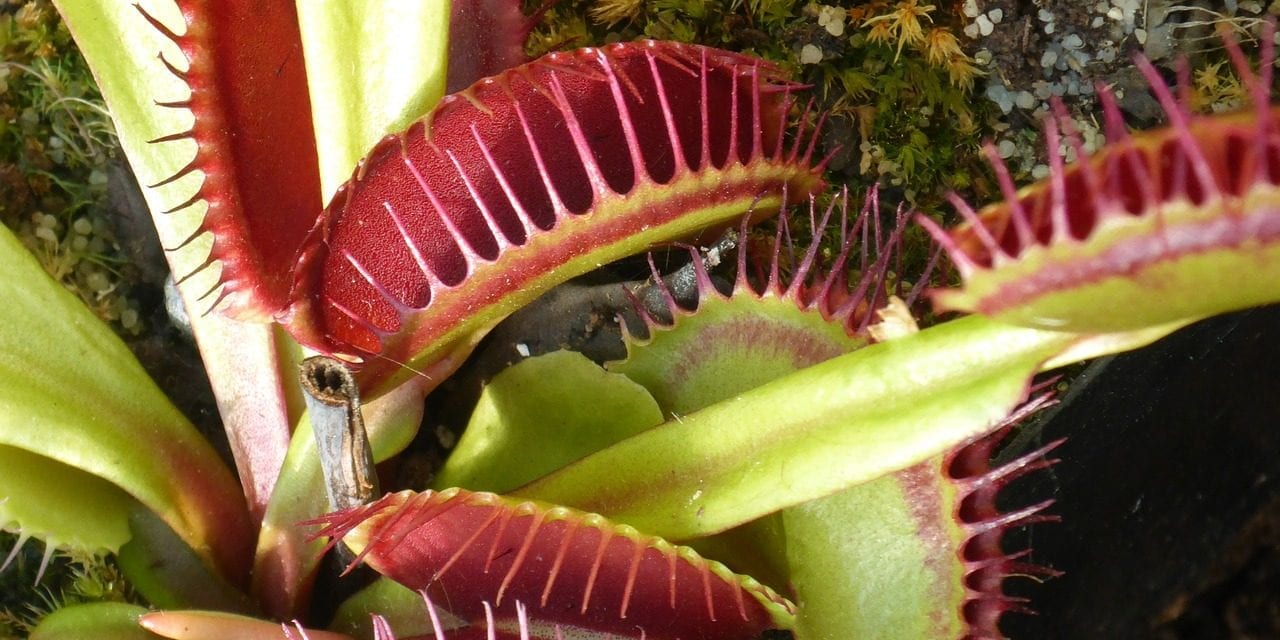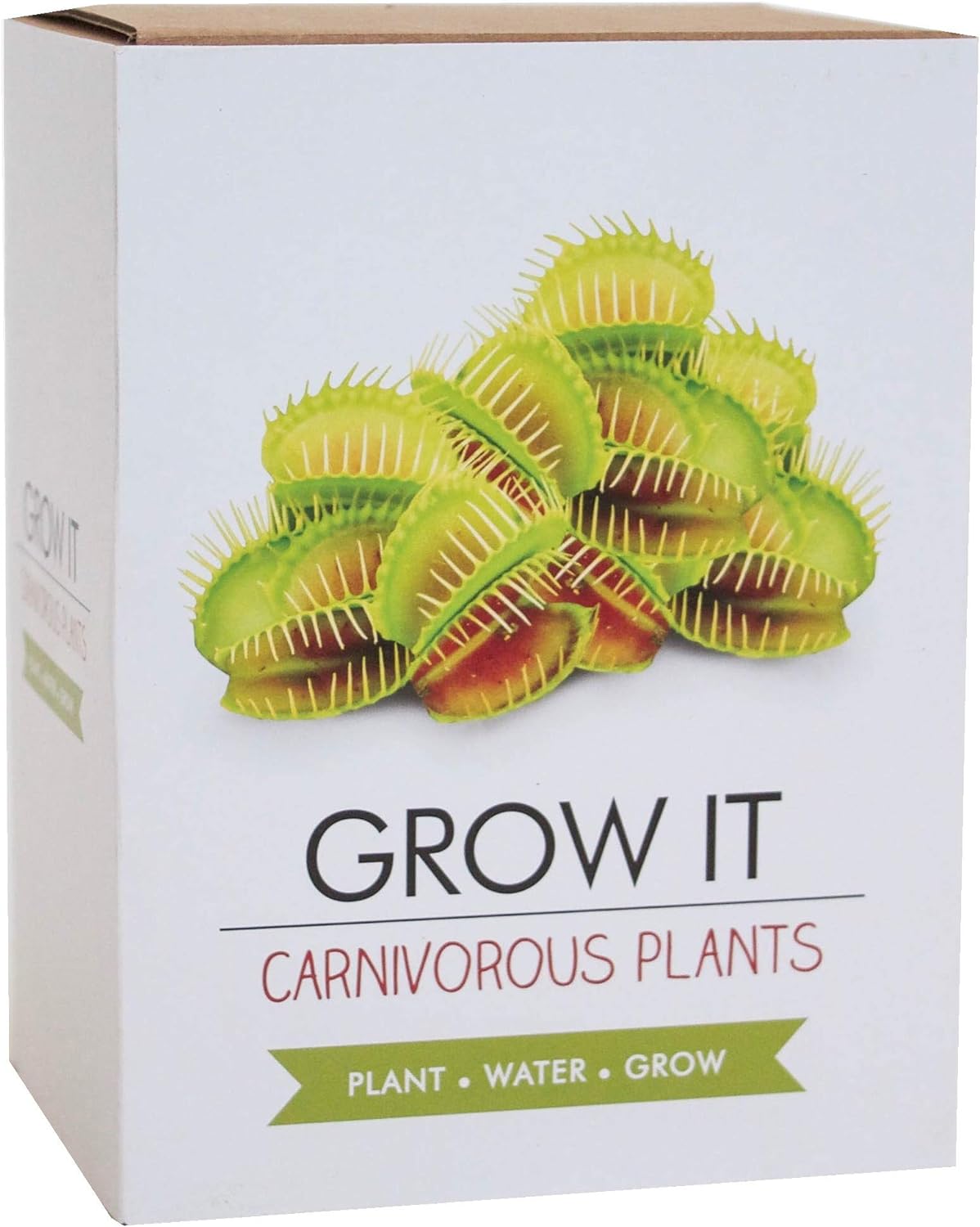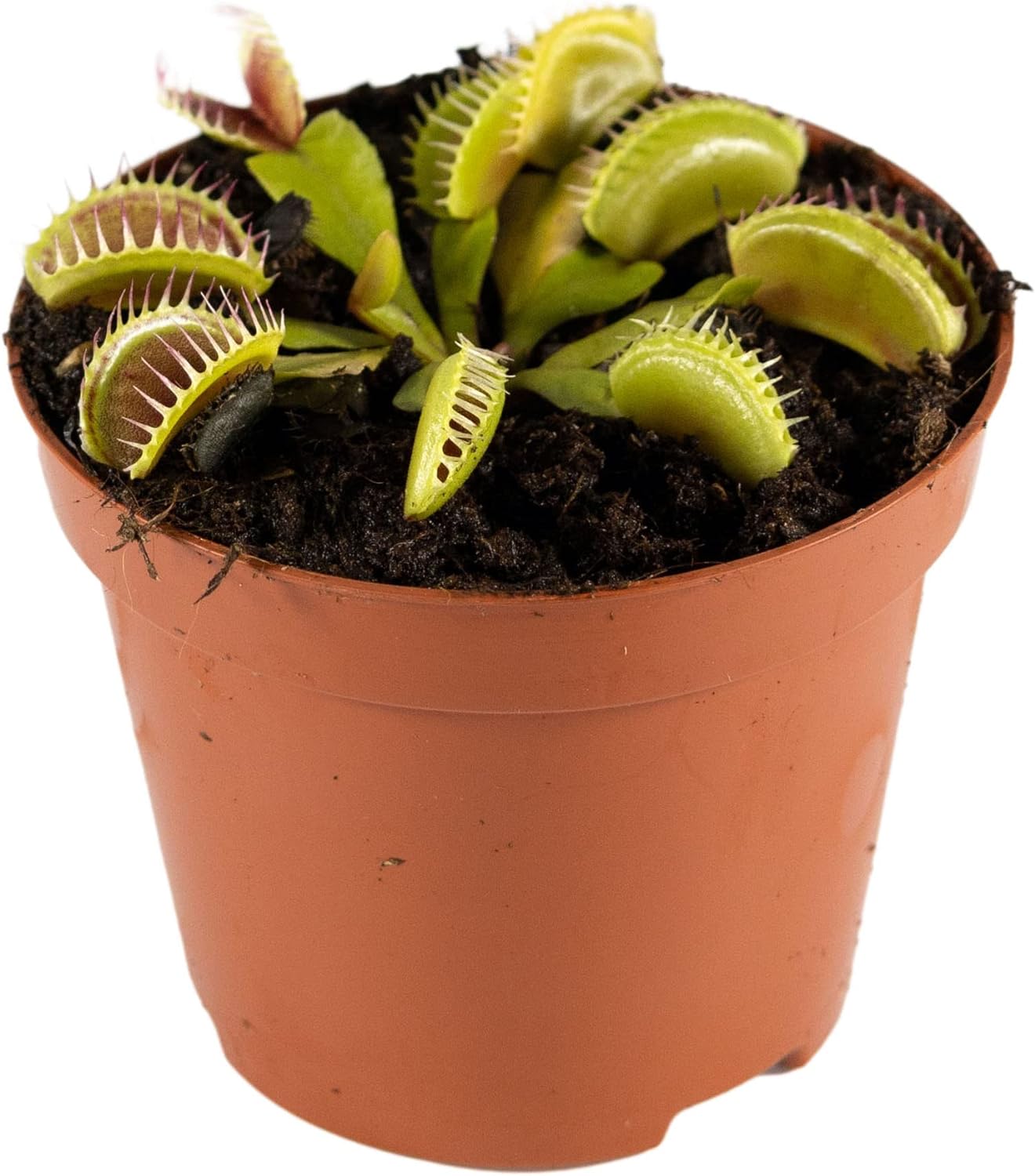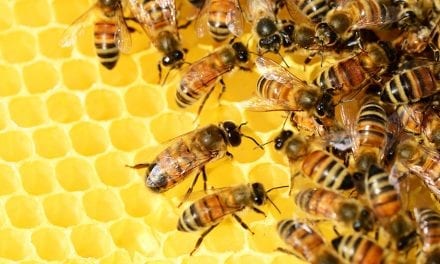The Venus Flytrap (Dionaea muscipula)
This is a carnivorous plant native to subtropical wetlands on the East Coast of the United States in North Carolina and South Carolina. It catches its prey—chiefly insects and arachnids—with a trapping structure formed by the terminal portion of each plant’s leaves. The trapping structure is triggered by tiny hairs (called “trigger hairs” or “sensitive hairs”) on their inner surfaces.
When an insect or spider crawling along the leaves contacts a hair, the trap prepares to close, snapping shut only if another contact occurs within approximately twenty seconds of the first strike. Triggers may occur if one-tenth of the insect is within contact. The requirement of redundant triggering in this mechanism safeguards against wasting energy by trapping objects with no nutritional value, and the plant will only begin digestion after five more stimuli to ensure it has caught a live bug worthy of consumption.
You can find out more about Carnivorous Plants.
Would you like our Dan The Gardener & Friends FREE Activity Book for kids packed full of colouring-in, dot to dot, word searches, recycling tips and diary sheets plus more?
This post includes affiliate links. This means we earn a small commission if you buy through our link (at no extra cost to you). We only suggest products or services we genuinely love and trust. Thanks for supporting our blog!























